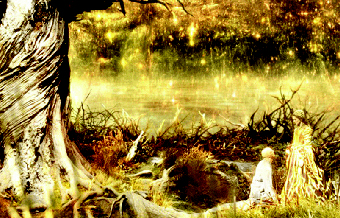By Steven Snyder
The Fountain
Written and Directed by Darren Aronofsky
Now in theaters
Hugh Jackman and Rachel Weisz in Darren Aronofsky’s new film “The Fountain.”
The evidence was there, but now it’s been repeated and verified for a third consecutive time: Darren Aronofsky is the next great filmmaker, the towering visionary of his generation.
In 1998’s numerically-titled “&Mac185;” his preoccupation was with enlightenment through math, and the perils — both internal and external — that awaited the man who tried to distill reality down to a mathematic formula. In 2000’s “Requiem For A Dream,” that year’s best film, he probed the ecstasy of drug use, and the horrors of addiction.
And now this holiday weekend, his third film — “The Fountain” — is his most brazen, beautiful and breathtaking yet, a work of spiritual gusto that might just be as close to a religious experience as one can experience in a movie theater.
If his past films were stories about mathematicians and druggies seeking something divine through their obsessions, then this film is about the timeless struggle between man and death; about how men have tirelessly sought to defy the fundamental law of mortality.
As has been the case with all of Aronofsky’s works, there’s almost no way to describe “The Fountain” in literal terms. His films are sensory experiences, avoiding words whenever necessary and always chasing a balance of simple spectacle and profound metaphor. And “The Fountain” follows suit, offering up three simple stories that, when joined together, advocate as bold a statement about death, love and the afterlife as any director has ever put forth.
The metaphor surrounds the tree of life, and humanity’s constant pursuit of its youth-giving properties. In the past, a 16th century conquistador (Hugh Jackman) is dispatched by the queen of Spain (Rachel Weisz) to seek out the fabled tree of life, the tree which will grant immortality to whoever drinks its sap. In the present, a genetic scientist (Jackman) rushes to find ways of reversing the effects of brain tumors in monkeys in order to save his ailing wife (Weisz). And in the future, a bald man (Jackman) rides through space in a bubble of air, joined only by a dying tree as he floats closer and closer to a dying star.
On the page, this surely sounds crazy, but as connected by Aronofsky, the parallels surrounding life and death, love and purpose, are engaging and astonishing.
In the conquistador tale, man seeks immortality through the fabled tree of life (the Bible’s companion to the tree of knowledge, the fruit of which Adam and Eve ate), aiming to take it from the pagans by the sword. With immortality, he will save his country and, with it, earn the heart of his beloved queen.
In the modern-day science tale, man seeks his answers through science, turning away from his wife to spend every waking minute with his guinea pigs and his microscopes, trying to save her. With a medical cure, he will save her from death’s grip.
And in the future, the tree of life is envisioned literally as a companion, man eating small chunks of its bark to stay alive and whispering to its small fibers that all will be alright. This time with a shaved head, man is more philosophical and meditative, awaiting the transcendence that the ancient Mayans believed accompany the death and explosion of this fabled star.
One after another, these fantastical fables line up, the first about war, the second about science and the third about meditative mysticism. All concern men seeking something unattainable.
And all rely on a virtuoso performance from Hugh Jackman. Playing to the full range of human emotion, he is simultaneously rugged, angry, distressed, philosophical and devastated, carrying the weight of the film’s most surreal scenes and fixing the audience’s attention, regardless of century, on the same quest that obsesses his character. Reports said that Brad Pitt dropped out of the project, and thankfully so. Jackman gives a performance Pitt never could.
Aronofsky, in a sparse 98 minutes, connects three tales traversing 1,000 years with the same technical precision he has displayed in previous films. Using lighting, camera angles, overlapping dialogue and even geographic shapes, he has interwoven a story as dense as the entire “Lord of the Rings” trilogy, packing each subplot to the brim.
It’s the ending though, much like “Requiem For A Dream,” where he brings the storylines crashing together in breathtaking fashion. As the music builds, the editing accelerates and the words fade in the face of the movie’s startling images, Aronofsky offers up a different take on the tree of life. He suggests it’s not something to grab for but something we already have in the palm of our hands, and only by embracing our mortality can we open our hearts for what lies in the great beyond.
True, the film’s time traveling, its characters and their supernatural quests seem bewildering at first, but in the end they are as simple as praying to god, loving a wife or even climbing a tree. It’s a celebration of storytelling, of cinema — of life itself.


































